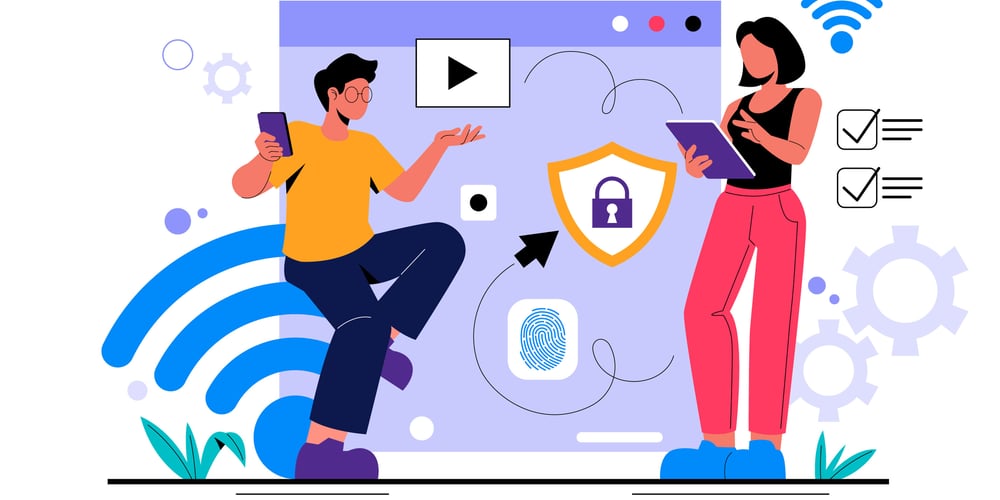Step-Up Authentication: A Practical Guide for Developers
In today’s fast-paced digital world, security is a moving target. Developers are tasked with the delicate balancing act of creating seamless user experiences while keeping systems airtight. Enter step-up authentication—a method that helps developers protect sensitive actions without frustrating users with constant authentication checks.
But what is step-up authentication, and how can developers implement it effectively? Let’s dive into the details.
What Is Step-Up Authentication?
Step-up authentication is a dynamic security process where users are prompted to verify their identity at critical moments, such as performing high-risk actions or accessing sensitive data. Think of it as an additional security checkpoint.
For example:
- A user logging into their account might only need a password.
- But if they try to access their financial records or make a wire transfer, they’re required to authenticate via a one-time password(OTP) or biometric scan.
This approach ensures that users don’t encounter unnecessary friction unless the action warrants it.
Why Developers Should Care
-
Enhanced Security Without Compromising UX:
Step-up authentication strikes the perfect balance between security and usability. Developers can safeguard sensitive areas without forcing users to jump through hoops at every step.
-
Compliance with Industry Standards:
Many regulations, like GDPR and PCI DSS, recommend stronger authentication for sensitive data. Implementing step-up authentication can keep your system compliant.
-
Scalable Security:
As your app grows, so do the threats. Step-up authentication allows you to scale security based on the risks associated with different user actions.
When to Use Step-Up Authentication
Not every interaction needs a security boost, so identifying the right moments is key. Consider these scenarios:
- Accessing sensitive data: Personal info, payment details, or health records.
- Performing financial transactions: Online purchases, fund transfers, or bill payments.
- Unusual user behavior: Logging in from a new device or location.
- High-privilege actions: Changing account settings, password resets, or API key generation.
How to Implement Step-Up Authentication
Here’s a practical guide to get you started:
1. Define Risky Scenarios
Begin by mapping out actions in your app that require additional security. Collaborate with security teams to identify high-risk events.
2. Choose Authentication Methods
Decide how users will verify themselves during step-up prompts. Popular options include:
- OTP via SMS or email
- Biometric authentication (fingerprint or face recognition)
- Security keys (e.g., FIDO2-compatible keys)
- Push notifications
3. Use Contextual Triggers
Integrate risk-based authentication logic to determine when step-up is needed. Factors like geolocation, device fingerprinting, and behavioral patterns can help identify risky situations.
4. Integrate APIs
Many authentication providers like AuthX, Okta, or Auth0 offer APIs for step-up authentication. These can save you development time while ensuring robust security.
5. Optimize for User Experience
Keep the process quick and user-friendly. Provide clear instructions during the step-up flow and allow users to recover quickly if they fail authentication.
6. Test and Monitor
Simulate real-world scenarios to test your step-up triggers. Monitor authentication success rates and user drop-offs to refine the process.
Tools and Frameworks to Get You Started
Here are some developer-friendly tools for implementing step-up authentication:
- AuthX: Offers flexible APIs for multi-factor and step-up authentication.
- Twilio Verify: Great for OTP and SMS-based step-up prompts.
- Firebase Authentication: Easy-to-implement authentication for mobile apps.
- Okta: Enterprise-level solution for identity management.
Common Pitfalls to Avoid
-
Overuse of Step-Up Prompts
Triggering step-up too often frustrates users. Use risk analysis to minimize unnecessary challenges.
-
Ignoring Edge Cases
Test for scenarios like poor network conditions or outdated devices to ensure a seamless user experience.
-
Lack of Transparency
Users should understand why they’re being asked for additional authentication. A simple message like, “We need to confirm it’s really you for this action,” can build trust.
Final Thoughts
Step-up authentication isn’t just about adding extra security; it’s about doing so intelligently. By understanding when and how to implement it, developers can create applications that feel both secure and user-friendly.
So, whether you’re building a fintech app, a healthcare portal, or an enterprise tool, step-up authentication should be on your radar. It’s a win-win: users get peace of mind, and you get a more secure system.
Now, it’s your turn. Are you ready to take your app’s security to the next level?

